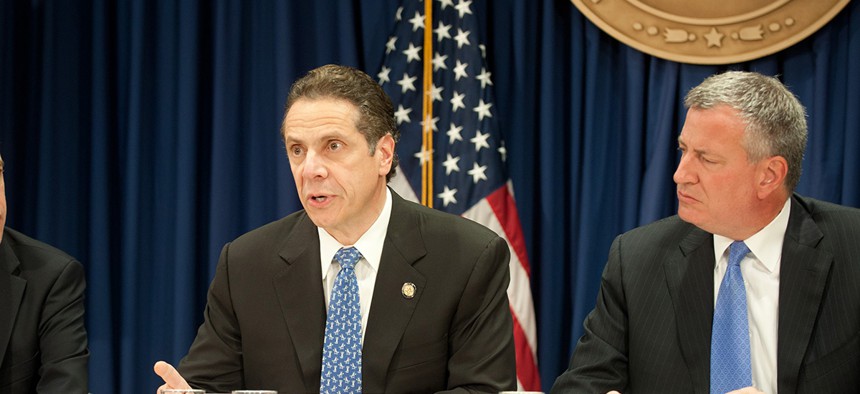In March 2015, over a quarter of New York State’s population – about 5.4 million residents – lacked access to a broadband connection of at least 25 Mbps. Five years later, BroadbandNow reports that New York is currently the fourth most connected state in the country with 98% of the population able to access Internet connections of at least 100 Mbps. With further buildout ongoing and with transformative offerings like 5G looming on the horizon, there are many reasons to be optimistic about the state’s broadband future. Indeed, at some point very soon, broadband will have reached 99.9% of all New Yorkers.
How did the state make such remarkable progress so quickly? Its overall broadband strategy involved three key elements.
The first element was leadership. Governor Cuomo deserves credit for recognizing that a lack of broadband, especially in rural areas, is a major policy imperative that requires a strong, comprehensive response. But Governor Cuomo did more than pay lip-service to an issue that has long befuddled policymakers. Rather, he set an ambitious goal – of universal broadband access in a matter of years – and marshalled substantial resources in support of it.
Achieving this goal necessitated considerable investment by public and private entities, the second element of the state’s strategy. Plugging rural broadband gaps is expensive. In sparsely populated areas – of which there are many in New York – the high costs of delivering broadband render these markets “uneconomic” in the absence of a government subsidy. To offset those costs, the Governor pledged $500 million in state funds, an extraordinary sum that far exceeds what any other state has done on this front.
Funding for rural broadband has also been bolstered by private sector investment. For example, Charter Communications continues to make significant network investments, yielding, among other things, gigabit service being available across its New York footprint. In addition, the state’s approval of the T-Mobile/Sprint merger hinged in part on the combined company’s ability to invest in bringing 5G to the “overwhelming majority” of state residents in the next few years.
Effectively distributing $500 million in state grants involved partnerships, the strategy’s third element. From the beginning of this monumental undertaking, New York State viewed partnership with the private sector as the best way to solve its broadband challenges. Via its New NY broadband program, the state used available grant funding to partner with expert ISPs in the deployment of new networks to unserved areas. Progress on these projects has been robust.
The Governor’s commitment to this proven model for broadband expansion has been steadfast. This was evident recently when he vetoed a bill that would have required state agencies to study the feasibility of using public funds to support municipal broadband. Previously, when scoping out the New NY program, the Governor’s broadband office expressly rejected the possibility of funding municipal broadband, opting instead to prioritize partnerships with private ISPs. The Governor’s veto was thus consistent with the partnership-centric strategy he pioneered and reflective of the fact that municipal broadband projects are risky endeavors that imperil scarce public resources.
Given these dynamics, it is curious that New York City seems eager to embrace municipal broadband. The City is already among the best served markets in the country: nearly every resident can choose from multiple options for home and mobile broadband service. The biggest problem facing the City in this context is that broadband adoption rates lag in certain communities. But rather than address this issue directly – by, for example, partnering with private and nonprofit entities in an effort to bring more people online, an approach that works – the city’ Internet Master Plan has charted a course toward a $2 billion municipal fiber system.
It is worth noting that at a time when more and more states are following New York’s lead on broadband, no other major urban area has chosen the path being explored by New York City, and many smaller cities, like Bristol, Virginia, Burlington, Vermont, and Groton, Connecticut, have struggled or failed to sustain a municipal broadband system. As such, New York State and every city in it remain best served by staying the course plotted out by the Governor and working collaboratively with the private sector rather than trying to compete with it.


